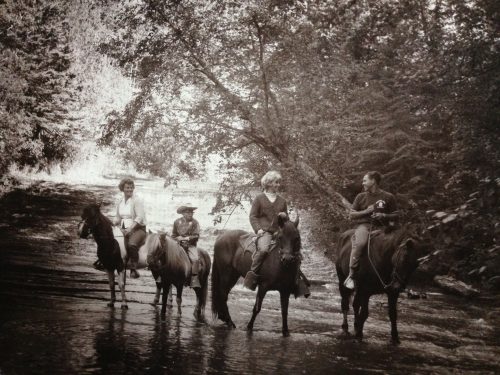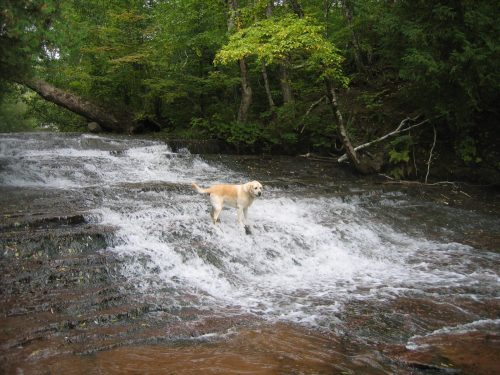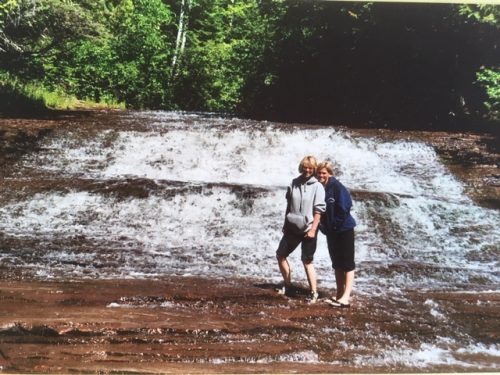A popular Wisconsin campground near Lake Superior that Carnegie Hero Dennis D. Swenson operated with his mother now encompasses the majority of a forest preserve that is open to the public.




A popular Wisconsin campground near Lake Superior that Carnegie Hero Dennis D. Swenson operated with his mother now encompasses the majority of a forest preserve that is open to the public.




Swenson, 62, died attempting to save his 95-year-old mother, Dorothy H. Swenson, from the burning house they shared in Cornucopia, Wis., on May 1, 2015.
With the Swenson family aging and no other relatives close by, the family already had been considering options for the recreation land before the fire to safeguard its natural features, said Cheri and Brent Surowiec, Dennis Swenson’s sister and brother-in-law.
“It just wasn’t going to be handed down, so we wanted to preserve it and keep the family’s wishes,” Brent Surowiec said.
Shortly after the fire, the Surowiecs, who live in Kingfield, Maine, found a willing partner in a nonprofit land trust now known as Landmark Conservancy, which has established more than 200 conservation easements across 20 Wisconsin counties.
Although the conservancy typically works with private landowners, its leaders worked with local officials to ensure the property would be accessible to the public while the conservancy maintains a conservation easement.
“I think they set a wonderful example,” Landmark Conservancy conservation manager Erika Lang said of the Surowiecs and Swensons. “What an amazing legacy to leave.”
After a three-year process, Bayfield County assumed ownership of the land in May 2018 through a sale that included grant funding from the National Oceanic and Atmospheric Administration’s Coastal and Estuarine Land Conservation Program and Wisconsin’s Coastal Management Program.
An APG Media of Wisconsin article published in 2018 stated that “Bayfield County officials said they were extremely excited about the opportunity to manage such a beautiful property. The waterfalls on the Siskiwit River are absolutely stunning, while the surrounding forest, wetland, and riparian habitats are ecologically and biologically important.”
Bayfield County manages the 99-acre property, which includes more than 90 acres formerly belonging to the Swenson family.
Working together, the Conservancy will monitor the property and assist Bayfield County in their ongoing stewardship of the land.
The Swenson family’s connection to the land dates to 1943, when Swenson’s parents bought a dairy farm.
They later expanded the property and shifted from farming operations to cottages in the late 1960s or early 1970s.
Besides the five cottages on the campground, locals enjoyed visiting to fish in the Siskiwit River, a half-mile of which cuts through the property, the Surowiecs said.
The state of Wisconsin has designated the river on the property a Class 1 trout stream that has sufficient natural reproduction to sustain wild trout populations.
According to the APG article, there was a huge outpouring of support for the project from the Cornucopia community.
“For a few weeks, our mailbox was flooded with donations and cards from supporters, sharing memories of the Swenson family and special times spent on the river,” Conservancy’s Director of Advancement Mary O’Brien told APG.
“In a matter of weeks, we had the funds needed to complete the sale. People supported the project for a variety of reasons. People believed in the protection of the Siskiwit River and Lake Superior; they wanted to be able to continue to visit the property; they wanted to see more recreational opportunities in the area; and they wanted to encourage economic growth in their town,” she said.
Visitors to the preserve now have access to parking areas on either side of the river, and an existing, roughed-in trail leads to the river. Future plans include a welcome kiosk, interpretative signs, and possibly more trails.
“I think my family would be proud with the whole outcome,” Cheri Surowiec said.
— Chris Foreman, case investigator